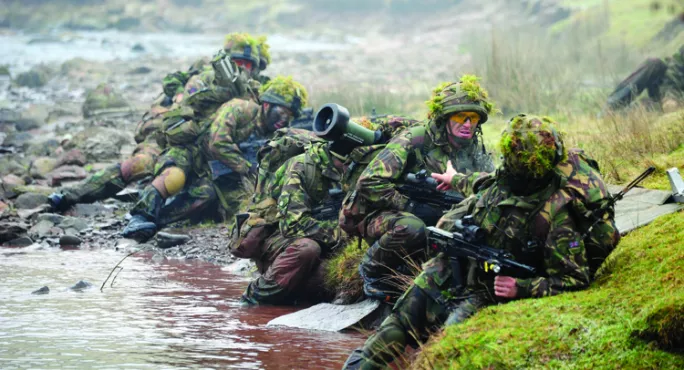- Home
- How school behaviour could be improved in the military style
How school behaviour could be improved in the military style

I used to be in the Army. As such, it is often assumed that behaviour management in the classroom should hold no fears for me. I am, after all, a military machine, the kids don’t stand a chance, surely?
Utter rubbish. I face the same challenges as every teacher. Yet, while I understand why some in the teaching profession are dubious about “military-style behaviour management”, I know more than most that the military can give us some lessons about behaviour that are worth listening to.
When the British Army faced accusations of mistreating detainees on military operations, it addressed this problem behaviour in an interesting way. There was not the “beasting” you read about in the press - no ramping up of screaming on parade grounds or punishing physical tasks. Instead, General Sir Richard Dannatt, then chief of the general staff, introduced a code of Values and Standards. It was clearly presented, disseminated across the army and delivered as structured training to soldiers on a regular basis.
The code in question consisted of the easily remembered mnemonic SOLIDC - standing for Selfless commitment, respect for Others, Loyalty, Integrity, Discipline and Courage (moral and physical).
You may assume that the glossy booklets that appeared in offices and waiting rooms might have been dismissed by some as a passing initiative, put together by a transient staff in a government department simply to satisfy their managers. But it wasn’t. The reason for this was that it was seamlessly linked with the chain of discipline and supported by the Army’s legal overseers. As a company commander, with the responsibility and accountability for up to 120 soldiers and their equipment, this meant that I had real power to ensure that those standards were met. The whole initiative was, in the end, judged to be a great success.
Being part of that process has served me well as a teacher. While training in the Troops to Teachers programme delivered by the University of Brighton, I have tried to meet these military standards in a way that is appropriate for the classroom.
Build the platoon ethos
Clearly, teenagers have different motivations to soldiers, but they still seem to respond to a consistent, positive and mutually respectful environment. My philosophy in the Army was to make sure that the whole company stayed together and we helped those that struggled; I did not ask anyone to do something I was not prepared to do myself. In the classroom, it is the same. Building mutual trust and respect creates a cohesive class who can learn together and support each other.
Model what you want to achieve
As company commander, I was the person who had to demonstrate what the values that Dannatt set out meant in practice. In schools, every child has to understand what the school values are and why they are important, and it is here where the teacher needs to lead. I model expected behaviours and then expect the same from the pupils. Many of these behaviours are simple, like speaking clearly, never trying to talk over a class and always being well presented. Others can be more subtle, such as maintaining the learning relationship outside the classroom by engaging with the pupils in the lunch queue, or always maintaining eye contact in every interaction (while acknowledging that this needs to be culturally appropriate).
Courage to hold back
In the military, it is essential that you don’t get wound up. The battlefield needs to be a place of calm thought if you are to be effective. The classroom works in much the same way. The brain reacts in the same way to stress in both environments and a teacher becomes redundant if they allow themselves to get angry. More importantly, a pupil cannot learn if they are angry or stressed, so I have always used every opportunity to de-escalate every emerging situation as quickly as possible.
My military training has been useful here: I always come down to the pupil’s eye level and make sure that they understand what I am saying, usually by getting them to repeat what I have asked them to do. It is crucial that I model the behaviour that I expect from the pupils by speaking calmly, keeping steady eye contact and showing a level of empathy with the stress that they are experiencing.
Accountability extends to the leader
At my school, Great Torrington School, our values are resilience, health, opportunity, responsibility, respect and relationships. I will encourage pupils to demand that I meet the same standards and ask them challenge me when I don’t. Once this happens, I will know that the standards of behaviour that the school expects are hardwired.
The core Army values that I came to teaching with have been reinforced and enhanced by the experienced teachers and mentors that I have encountered in schools. I have seen that the consequences of bad behaviour in both schools and the military are effectively the same: a slip in the cohesion of the team and a reduced ability to complete the task. This suggests that a similar solution might be appropriate and, for me, that has certainly proved to be the case.
James Bunyard is a retired infantry major and a trainee history teacher at Great Torrington School in Devon
Keep reading for just £1 per month
You've reached your limit of free articles this month. Subscribe for £1 per month for three months and get:
- Unlimited access to all Tes magazine content
- Exclusive subscriber-only stories
- Award-winning email newsletters